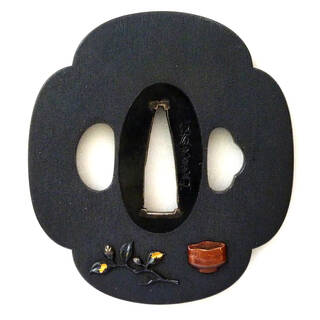A 'tsuba' is a hand guard placed between the hilt and the blade on a Japanese sword. Its purpose was to protect the hand and help balance the weight of the weapon.

Using the same materials and techniques as those found on the original, watch as a tsuba from our collection is replicated. The copying of historical masterpieces is known in Japan as utsushi and has long been regarded as an important form of training for students who seek to understand the processes involved in the making of an original work.
The original tsuba is the work of the master metalworker Gotō Mitsuaki (Hojō, 16th Master of the Gotō School, 1816 – 1856).
See how more objects were made on our YouTube channel.


